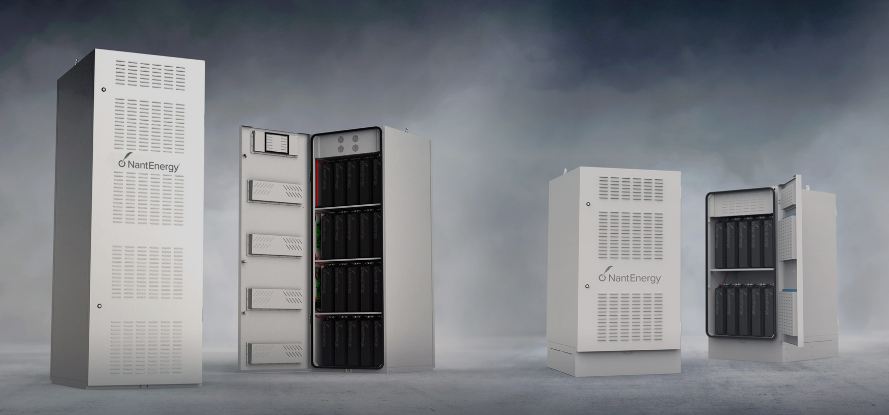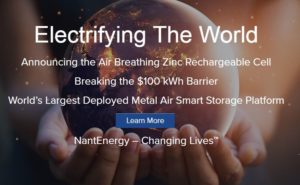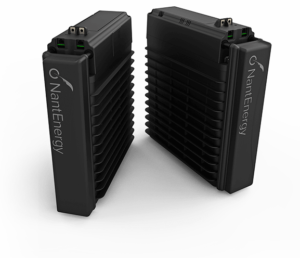Lithium Ion batteries have competition. Zinc-Air Batteries

As the world transitions to cleaner energy sources, the availability of energy storage systems that are cheap, efficient, and reliable becomes more and more essential. In fact, a storage breakthrough, of the order of say, 10X storage of existing options at similar cost, would probably have the sort of impact across sectors that the smartphone has had. That is the obvious case for storage. What is perhaps not so obvious is just how critical, and profound, the impact of storage, especially a tech breakthrough that enables higher storage efficiency, could have on the global fight against climate change. A new announcement by Nant Enegy, a US based firm that claims to have pioneered, zinc-air batteries, claims just that.

NantEnergy, a US-based energy company, has announced the development of a zinc-air battery which stores energy at a much lower price point than other battery technologies available in the market, including the popular market driver Lithium-ion. Going head to head with lithium-ion battery costs (~$300-$400/kWh), NantEnergy claim that with its zinc-air battery it has broken the $100 manufacturing cost barrier, a threshold at which power storage is expected to be affordable enough to have a more mainstream impact.
Beyond potential pricing points, zinc-air batteries hold other advantages over lithium-ion batteries as they don’t pose fire hazards or need to prevent overheating. Add to that the problems in sourcing cobalt for manufacturing Li-Ion batteries, from Congo, the world’s largest producer, with the country’s political instability and desire to hike cobalt taxes.

Like lithium-ion, the potential applications for zinc-air batteries range from powering electric cars and also homes and businesses. As the world increasingly turns to renewable energy, this cost-effective and tested storage solution is expected to provide a greater penetration of renewables in electricity and electric vehicles.
Electricity is generated from photovoltaic solar panels and in the charging process, the Zinc Air battery system uses the electricity to convert zinc oxide to zinc and oxygen. This electrochemical reaction generates zinc which serves as a storage form of energy.
In the discharge process, the battery system converts the electrochemical energy from the zinc by combining (oxidizing) the zinc with oxygen from air, generating electrons. The breakthrough at NantEnergy has been in enabling zinc to retain its charge for prolonged periods of time, as well as repeating the cycle of charge and discharge over 1,000s of repeated cycles without deterioration, according to the company.
But in the least electrified regions of the world, like Africa where 450 million people still lack access to power, the need is more urgent. NantEnergy says its zinc-air batteries have already been successfully tested in 110 villages that previously had no access to electricity in parts of Asia and Africa, including Indonesia and Madagascar. But with only 55 megawatt-hours of storage deployed globally, the company is looking to boost scale with a battery manufacturing facility set to open in California next year.
Like most alternatives to national grids also existing across Africa, the zinc-air battery systems will be deployed alongside solar panels in micro-grids which have been earmarked as a crucial part of power infrastructure in African countries like Nigeria where rural electrification rate is a meager 36%. NantEnergy is headed by Patrick Soon-Shiong who’s also the owner of the Los Angeles Times. So far, the company has received funding from the World Bank, the United States Department of Energy and the International Finance Corporation.
Recently, we reported that The World Bank Group committed a $1 Billion fund for a new global program to ramp up investments in Battery Storage for energy systems in developing and middle-income countries.




